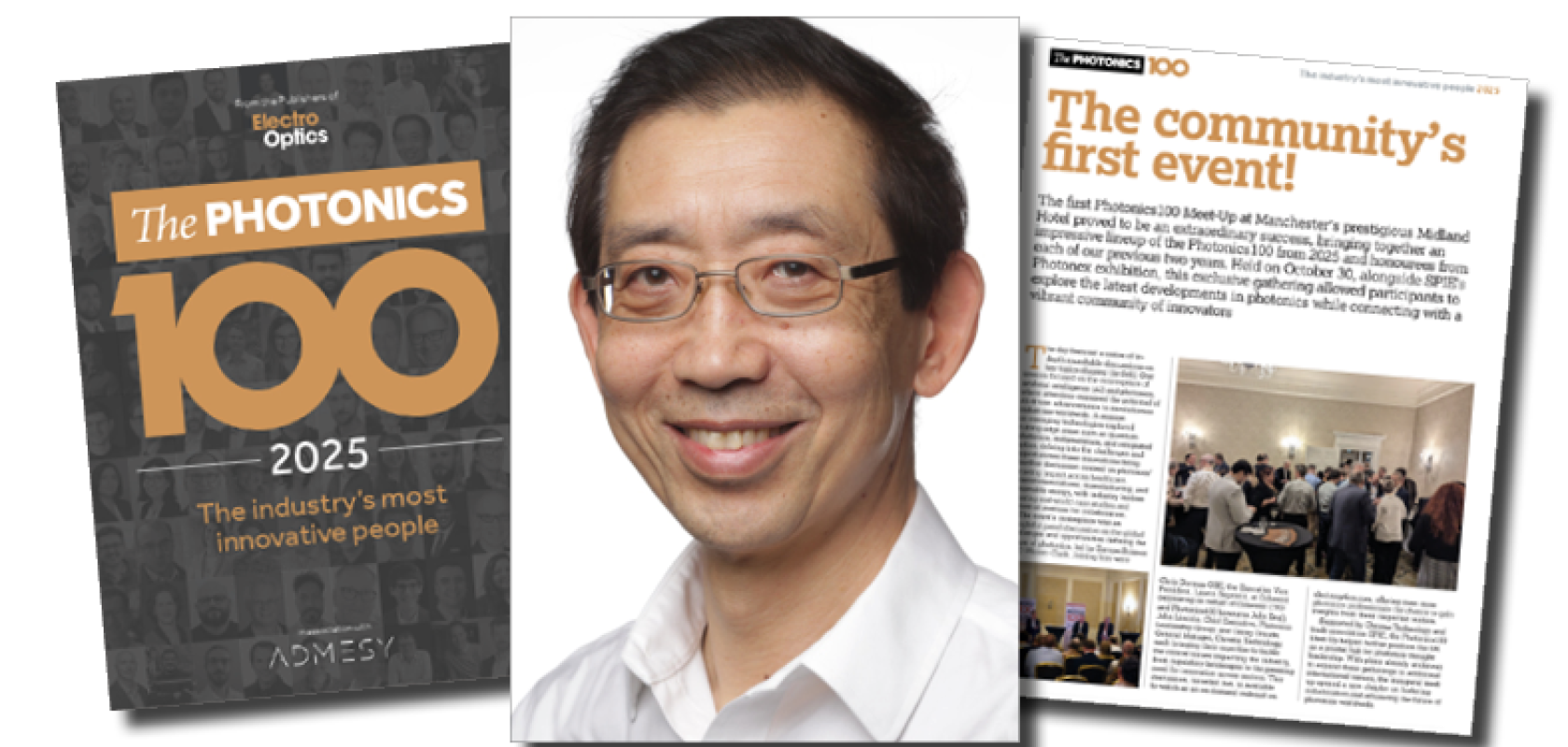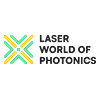Chun He, Chief Scientist at Focuslight Technologies and a Photonics100 honoree, is presenting a talk at Photonics West this year on a high-gain, high-efficiency fibre amplifier with suppression of amplified spontaneous emission.
He’s paper reports the amplifiers especially outperform traditional fibre amplifiers when operating at lower repetition rates where ASEs compete strongly with stimulated emissions.
Electro Optics caught up with He during the Photonics100 judging process.
What are you currently working on?
I am currently working on three projects:
- fibre amplifiers that have extremely high gain (~50dB) for Er3+, Yb3+ doped single-mode fibres and LMA fibres
- long-lifetime (over 10,000 hours) SESAM mode-locked ultrafast lasers with specially designed integrated micro-optic components
- multi-channel micro-optics circulator using microlens arrays and high precision fibre arrays.
How does your work differ from existing solutions?
On the extremely high gain fibre amplifier, this is a record achievement development as previous fibre amplifier gainsnever exceeded 25 dB with ASE noise levels below -23 dB.
In long-lifetime SESAM mode-locked femtosecond and picosecond fibre lasers, this breakthrough accomplishment addresses the common issue in industrial femtosecond lasers, which typically require changing the spot every ~500 hours using a motor-driven, indexing mechanism, which generally causes reliability issues.
And finally, single channel micro-optics-based circulators have been made for many years. They are the most complicated devices built from micro-optic components, made possible by active-alignment methods. We are the first to make eight circulators in an array so far, using mostly passive-alignment methods with outstanding performance across all eight circulators.
What is the potential for future development and application of your innovation?
The extremely high-gain fibre amplifiers have wide applications in many fields: long-haul WDM fibre optic communications, fibre lasers, and lidars for autonomous driving, to name a few. Until now, in applications requiring higher gain, two or more fibre amplifiers are connected in tandem to achieve the required output power. To amplify only the signals, not the ASEs, optical isolators and band-pass filters are placed in between the amplifiers. We have demonstrated these novel amplifiers in Er3+, Yb3+ doped single-mode fibres and LMA fibres. These novel amplifiers have the benefits of high performance, simple configuration, low cost, small footprint, and low electrical power consumption.
One of the major obstacles to wide acceptance and large-scale application for ultrashort, pulsed lasers is the short-lifetime of the SESAM absorbers used for mode-locking in the oscillator. We designed and manufactured a new micro-optic device that integrated the function of WDM, bandpass filter unidirectional coupler and focuser, replacing the four components traditionally used in the oscillator into one component, greatly reducing the cavity loss of the mode-locked fibre oscillator, so reducing the pump power and laser power density on the SESAM. The lifetime of the SESAM is substantially extended.
The success of the eight-channel circulator proves that multichannel micro-optic components, assembled largely by passive alignment, can be made with the same high performance as single-channel micro-optic components aligned by active-alignment methods. Here, higher precision microlens array and precision V-groove based fibres are the key determining factors.
In your opinion, what is the most significant photonics technology to emerge in the past 12 months and why?
Silicon photonics (SiPh)has made significant progress in the past year. Several companies (Intel, TSMC, Scorpios Technologies, Poet Technologies and others) demonstrated the high data rate and high bandwidth data transmission during OFC2024.
SiPh transceivers can enable faster and more efficient data transmission within 5G networks. It also uses less electrical power, facilitating network scalability. These characteristics are in line with the requirements of 5G technology and high data rate requirements.
What are the biggest challenges or threats to the industry in the next 12 months? How can these be overcome?
For the telecom/datacom industry, the challenges are twofold:
1) Component reliability. Current component manufacturing approaches involve too many discrete components and too many assembly steps. Every single component and single process are risk factors. Testing is needed at several manufacturing stages.
Solutions are:
A) Multichannel manufacturing using shared common components and mostly passive alignment steps is the direction to go, to reduce shared risks.
B) Transition to wafer scale manufacturing and testing.
2) Power consumption is becoming more critical now as bandwidth and channel number are increasing dramatically.
Solutions are:
A) switching to linear drives on the electrical domain to reduce the electrical power consumption directly.
B) use AI-enabled network management to control the on/off of transceivers when they are in demand or not in demand.
C) use wafer level SiPh to improve the efficiency of transceivers and amplifiers.
Which photonics sector do you see as having the greatest opportunity for growth in the next 12 months?
Telecom/datacom.
What are the challenges or opportunities faced by photonics researchers or companies in your country specifically?
The challenge I believe all of us in the photonic industry are facing is a slowdown in growth and revenue, due to labour cost increases and selling price decreases due to competition.
In our recent work (mentioned earlier), we designed and produced 50dB high gain fibre amplifiers for 1.0um and 1.5um wavelength regions. These novel amplifiers have the benefits of great BOM cost improvement (~50% of the current cost), high performance (ASE is <-45-50dB), simple configuration (~1/2 of the current components used, reduced ~ 50% in fibre fusion and routing), small footprint (~33% smaller in size), and low electrical power consumption (~20% lower power consumption).
In our other work for the telecom/data industry, we developed multiple-channel integrated products (the eight-channel circulators and switch fabrics also mentioned earlier), we innovatively developed new components and modules, plus the associated packaging and optical interconnect solutions for them, enabling greatly reduced labour time for assembly as well as improved reliability.
Great opportunities will emerge once these difficulties are overcome.
What advice would you give to someone who wants to get to where you are/do the job you do?
Build a solid knowledge and deep understanding in natural sciences, especially in physics, mathematics, and chemistry while in school. Always ask yourself and the instructors/teachers the reasons behind the formulas and laws. Think deeply about them, and don’t just remember them without understanding. Building good habits in school will affect your whole career life.
Once entering the industry, apply your knowledge learned to your work. It is very common that what you learned in school and your self-taught knowledge aren’t quite applicable to your work – this is very common. Then challenge yourself, use your after-work time to learn and catch up. The best way I found is to choose a good book recommended by reputable senior staff in your field, rather than searching in the wider seas of journal publications and books. Set a timeline to grasp the new knowledge and achieve an accomplishment to get recognised by your managers and colleagues.
Once you have achieved this, you will gain confidence about yourself and earn respect from your colleagues. You will be on a good path on your career journey!
You can Find He online at LinkedIn (https://www.linkedin.com/in/chun-he-a9791b6/) or ResearchGate (https://www.researchgate.net/profile/Chun-He-2).
He will present his invited paper, ‘A novel high gain, ASE suppressed, and highly efficient fiber amplifier’ at Photonics West on Tuesday, 28 January, 2025 from 10:20am -10:50am PST at Moscone South, Room 206 (Level 2).











